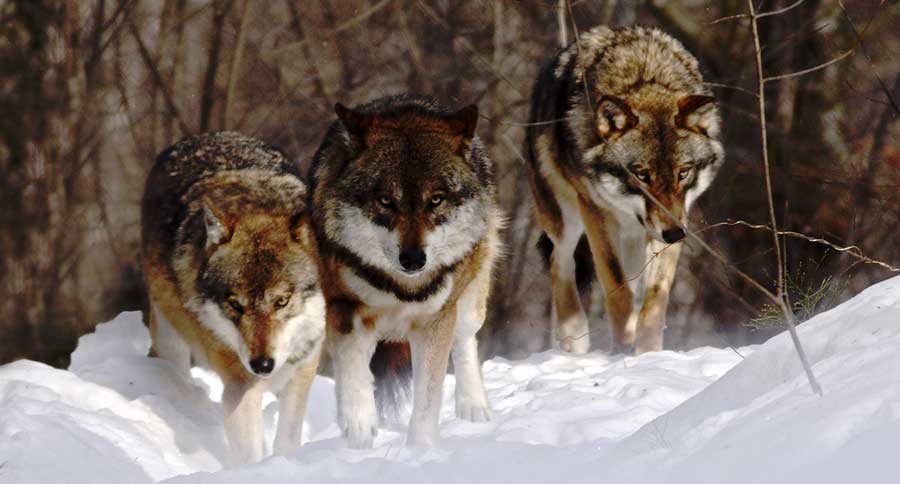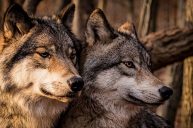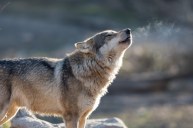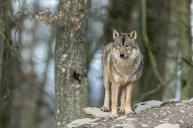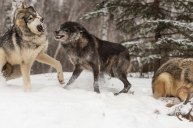The wolf population in Oregon has not only recovered, it has reached a record level and is increasing.
Last year, 2018, the Oregon Department of Fish and Wildlife concluded that the state's wolf population had reached its highest point since their return 20 years ago. The DFW put the population at 137 wolves, a 10-percent increase over 2017 levels.
In its annual report, the Oregon DFW also said that there are likely even more wolves in the state because they could not locate all of the predators during their winter count.
The agency documented sixteen separate wolf packs, defined as four or more wolves traveling together. That is also four more packs formed from Oregon's wolf population than were counted in 2017. Additionally, this is the second year in a row that wolves were found to be occupying a new area of Oregon for the first time since documentation began—in this year's count that would be the central Cascade Mountains.
The state delisted wolves from its endangered species list in 2015, but the canines continue to be protected and listed on the federal endangered species list. In 2015—four years ago—the Oregon wolf population was determined to be 81. At that time DFW Wolf Coordinator Russ Morgan had declared, "This is a success story. Not very many years ago, we had no known wolves in Oregon. Now we not only have wolves, but the population is healthy and growing."
Last month the U.S. Department of the Interior proposed delisting wolves from the federal Endangered Species Act list. If the proposal goes through, it will open the door for states to manage wolf populations with hunting and trapping.
Scientific wolf management plans versus environmental emotionalism
Many conservationists and outdoors-people hope the proposal is approved and that wolf management will fall in line with the science of other state game management policies.
But of course some anti-hunting and environmental groups oppose the idea of delisting wolves, regardless of the science supporting the measure.
Wolf predation on domestic livestock in Oregon increased 65-percent over the previous year. That being said, the overall rate of increase has apparently not been consistent with the growing number of wolves over the last nine years.
The DFW suggested that that disparity may be attributed, at least in part, to the use of non-lethal measures by the agency, livestock producers, and ranchers, including the implementation of scare devices and the removal of livestock carcasses and bone piles. Livestock losses could be decreased with proaction, they said.
Wolf recovery continues to increase across their range in the United States. Emotion- and money-driven special interest animal rights groups should not hold sway in wildlife management policy.
States where wolf hunting and trapping seasons are employed to manage their populations have seen great success in keeping wolves at sustainable levels while also protecting other wildlife from excessive wolf predation.
Like what you see here? Experience more articles and photographs about the great outdoors at the Facebook page, Stumpjack Outdoors.
NEXT: OREGON LAWMAKERS ADVANCE BILLS ALLOWING PREDATOR HUNTING WITH DOGS
WATCH: SITKA USES THE SCIENCE OF SOUND ON THEIR NEW FANATIC HUNTING GEAR
